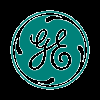Overall, GE Vernova exhibits strong business quality driven by significant demand in gas power and electrification, alongside a solid financial foundation. However, challenges in the wind segment and uncertainties in future growth prospects require careful management. The company is well-positioned for future growth, particularly in decarbonization technologies.
Analysis Date: January 22, 2025
Last Updated: March 12, 2025
Trailing Twelve Months (TTM) values provide a view of the company's performance over the last year.
Graham Value Metrics
Benjamin Graham's value investing approach focuses on finding stocks with a significant margin of safety between their intrinsic value and market price.
Intrinsic Value
Estimated fair value based on Graham's formula
$217.28
Current Market Price: $272.37
IV/P Ratio: 0.80x (>1.0 indicates undervalued)
Margin of Safety
Gap between intrinsic value and market price
-25.0%
Graham recommended a minimum of 20-30% margin of safety
Higher values indicate a greater potential discount to fair value
ROE: 16.737213879377748
ROA: 0.9400796348451005
Gross Profit Margin: 17.51609672342252
Net Profit Margin: 4.441264844756045
Trailing Twelve Months (TTM) values provide a view of the company's performance over the last year.
Strong Return on Equity
The return on equity (ROE) stands at 16.74%, indicating effective management in generating profit from shareholders' equity.
Low Profit Margins
0.0171
Operating Profit Margin
The net profit margin of 4.44% and operating profit margin of 1.71% suggest that the company faces challenges in converting revenue into profit.
About Profitability Metrics
Profitability metrics measure a company's ability to generate earnings relative to its revenue, operating costs, and other relevant metrics. Higher values generally indicate better performance.
Return on Equity (ROE)
Measures how efficiently a company uses its equity to generate profits
16.74%
10%
15%
Higher values indicate better returns for shareholders
TTM (as of 2025-04-16)
Return on Assets (ROA)
Measures how efficiently a company uses its assets to generate profits
0.94%
3%
7%
Higher values indicate better asset utilization
TTM (as of 2025-04-16)
Gross Profit Margin
Percentage of revenue retained after accounting for cost of goods sold
17.52%
20%
40%
Higher values indicate better efficiency in production
TTM (as of 2025-04-16)
Net Profit Margin
Percentage of revenue retained after accounting for all expenses
4.44%
8%
15%
Higher values indicate better overall profitability
TTM (as of 2025-04-16)
Low Debt Levels
0.11
Debt-to-Equity Ratio
0.02
Debt-to-Assets Ratio
The debt-to-equity ratio of 0.11 and debt-to-assets ratio of 0.02 indicate a strong balance sheet with minimal reliance on debt.
Adequate Interest Coverage
8.09
Interest Coverage Ratio
An interest coverage ratio of 8.09 shows that the company can comfortably cover its interest expenses, reflecting good financial health.
Weak Liquidity Ratios
The current ratio of 1.08 indicates that the company barely has enough assets to cover its liabilities, while a quick ratio of 0.83 suggests potential liquidity concerns.
About Financial Health Metrics
Financial health metrics assess a company's ability to meet its financial obligations and its overall financial stability.
Debt to Equity Ratio
Total debt divided by total equity
0.10x
1.0x
2.0x
Lower values indicate less financial leverage and risk
Less than 1.0 is conservative, 1.0-2.0 is moderate, >2.0 indicates high risk
Q4 2024
Current Ratio
Current assets divided by current liabilities
1.08x
1.0x
2.0x
Higher values indicate better short-term liquidity
Less than 1.0 is concerning, 1.0-2.0 is adequate, greater than 2.0 is good
Q4 2024


